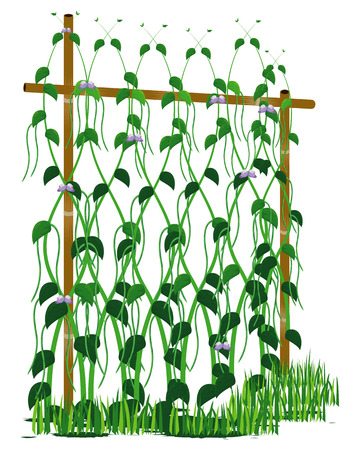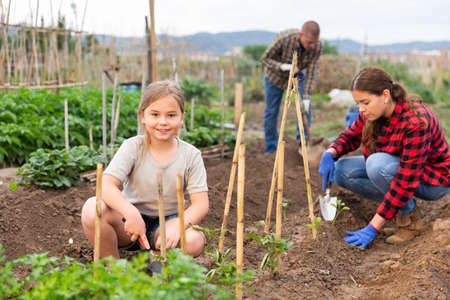Understanding the Importance of Crop Rotation in Allotment Gardening
When we step onto our UK allotments, theres a real sense of connection—between us, the soil beneath our boots, and the plants we nurture together. One of the oldest and most cherished secrets passed down through generations of gardeners is crop rotation. But why does this tradition matter so much, especially here in Britain? The answer lies in the intricate dance between plants, soil, and wildlife that makes each plot thrive year after year.
Crop rotation is more than simply moving crops around; it’s a thoughtful strategy for keeping our soil rich and healthy. By changing where you plant different types of vegetables each year, you help prevent soil-borne diseases from taking hold. Imagine peas and beans one year, followed by brassicas or root veg the next—each group brings its own set of needs and gifts for the earth. This careful cycle means pests are less likely to build up in one spot, reducing the need for chemical intervention.
For families tending their first allotment plot or seasoned growers looking to boost their yields, crop rotation offers tangible benefits: richer soils, fewer pesky invaders nibbling at your cabbages, and a more balanced ecosystem that supports everything from earthworms to pollinators. In essence, it’s about working with nature—not against it—to create a sustainable harvest you can be proud of season after season.
Grouping Your Crops: The Classic Families for Rotation
If you’ve ever watched your children sorting their building blocks by colour and shape, you’ll know how satisfying it is to see order emerging from chaos. The same principle applies in the allotment garden! Before plotting out a four-year crop rotation plan, it’s essential to group your vegetables into classic plant families. This sets the groundwork for a smooth, productive cycle, helping to manage pests, diseases, and soil health over the years. In the UK, we typically use four key groups: Legumes, Brassicas, Roots, and Others.
Why Grouping Matters
Just as siblings have different personalities and needs, vegetable families thrive best when their unique requirements are respected. Rotating these groups means each one gets its turn in the spotlight, ensuring no single family depletes all the nutrients or encourages lingering pests.
The Four Key Crop Groups
| Group | Main Examples | Key Benefits/Concerns |
|---|---|---|
| Legumes | Peas, Beans | Add nitrogen to soil; sensitive to root pests |
| Brassicas | Cabbage, Broccoli, Kale, Brussels sprouts | Heavy feeders; susceptible to clubroot and cabbage white butterflies |
| Roots | Carrots, Beetroot, Parsnips, Onions | Prefer low nutrient soil; vulnerable to carrot fly and eelworm |
| Others (Potatoes & Misc) | Potatoes, Courgettes, Tomatoes, Sweetcorn | Diverse needs; potatoes help break up soil but can encourage blight if not rotated |
A Gentle Reminder from Nature
Imagine rotating your family’s favourite picnic spots each summer—each new patch feels fresh and inviting. Likewise, giving your vegetables a new home every year keeps them healthy and the plot brimming with life. By grouping crops thoughtfully now, you’re sowing seeds for many happy harvests ahead—just as a loving family flourishes with care and attention.

3. Mapping Out the Four-Year Cycle
Planning your allotment beds for a four-year crop rotation can feel like piecing together a family puzzle—each part has its place, and every choice shapes next year’s harvest. Let’s walk through this step-by-step, drawing inspiration from traditional British allotment wisdom and the gentle patience of nurturing young seedlings.
Step 1: Assess Your Allotment Size and Shape
Begin by measuring your plot. Allotments in the UK often vary from modest half-plots to more generous full plots. Sketch a rough map, noting sunny and shaded spots, as these will influence where you plant sun-loving crops (like tomatoes) versus shade-tolerant greens (such as spinach). Remember, British weather is famously unpredictable, so flexibility is key!
Step 2: Consider Plot Orientation
Traditionally, British gardeners align their beds north to south to maximise sunlight exposure. Place taller crops (like sweetcorn or runner beans) at the northern end to avoid casting shade on shorter companions. Think of it as seating everyone at the dinner table so each guest enjoys the best view—sunshine for all!
Step 3: Divide into Four Distinct Beds
For classic rotation, split your space into four roughly equal beds. Label each bed according to the main crop group: Legumes (peas and beans), Brassicas (cabbage and broccoli), Root vegetables (carrots and parsnips), and Potatoes/Other. This method mirrors time-honoured allotment practice, ensuring each family of plants gets its turn in the spotlight while minimising soil-borne pests and diseases.
Step 4: Map Each Year’s Rotation
Create a simple chart or use coloured pegs to mark each bed’s role for the coming years. For example:
- Year 1: Bed A – Legumes, Bed B – Brassicas, Bed C – Roots, Bed D – Potatoes
- Year 2: Bed A – Brassicas, Bed B – Roots, Bed C – Potatoes, Bed D – Legumes
- Year 3: Bed A – Roots, Bed B – Potatoes, Bed C – Legumes, Bed D – Brassicas
- Year 4: Bed A – Potatoes, Bed B – Legumes, Bed C – Brassicas, Bed D – Roots
A Family Affair: Involve Everyone
This is a wonderful opportunity to invite children or friends to help with mapping out the plan. Ask them to colour-code beds or craft plant markers together—it’s hands-on learning rooted in tradition.
Cherish Flexibility and Tradition
No two allotments are alike. Embrace the quirks of your plot—be it a patchwork of odd shapes or an inherited raspberry bush tucked in one corner. Following these steps will set you on a path that blends classic British allotment know-how with the gentle patience of gardening as a family adventure.
4. Seasonal Planting and Timelines
Navigating the UK’s unique seasons is key to a successful four-year crop rotation plan on your allotment. Understanding when to sow, plant out, and harvest each crop group ensures that your veggies thrive and that the soil remains healthy for the next cycle. Here’s a seasonal guide tailored to the UK climate, helping you and your little helpers stay on track through the gardening year.
UK Growing Calendar: Sowing and Harvesting Guide
Each crop group—legumes, brassicas, roots & onions, and potatoes—has its own rhythm within the British growing season. The table below provides an at-a-glance guide for when to sow and harvest commonly rotated crops, keeping in mind regional variations (for example, gardens further north may need to start a little later).
| Crop Group | Sow Indoors | Sow Outdoors | Plant Out | Harvest Period |
|---|---|---|---|---|
| Legumes (peas, beans) | March–April | April–May | Late April–May | June–August |
| Brassicas (cabbage, kale, broccoli) | February–March | April–May (direct) | May–June | July–March (varies by type) |
| Roots & Onions (carrots, beetroot, onions) | (Onion sets only) Feb–March | March–May | (Transplant onions) April | June–September |
| Potatoes | – | March–April (chitting in Feb) | – | June–September (earlies), August–October (maincrop) |
A Month-by-Month Approach for Family Plots
If you’re gardening with children or just want to keep things simple, consider breaking tasks down by month. For example: In March, chit potatoes and start brassica seeds indoors; in May, direct sow beans outdoors; come June and July, get ready for your first harvests of early potatoes and peas together. This approach not only keeps things manageable but also offers regular opportunities for family learning and celebration around the plot.
Tuning In to Local Conditions
The British weather can be wonderfully unpredictable! Watch local forecasts and feel the soil—if it’s too cold or wet, hold off sowing by a week or two. Many experienced allotmenteers say “don’t be tempted too early”—especially in northern regions or after a chilly spring. Adapting your timeline helps ensure strong starts for all your crops within the rotation.
5. Managing Soil Fertility and Organic Matter
If you’ve ever watched your little ones play in the mud, you’ll know that healthy soil is as full of life as any bustling playground. For UK allotment holders, nourishing the earth is just as important as choosing what crops to grow. A four-year crop rotation plan isn’t simply about swapping veggies; it’s about building a thriving community beneath the surface, where roots, worms, and microbes all play their part.
Compost: Nature’s Recyclable Magic
One of the simplest ways to maintain fertile soil is by adding homemade compost. Think of compost as a hearty stew for your soil—full of kitchen scraps, garden clippings, and autumn leaves. Each year, spread a generous layer over your beds after harvesting. This not only feeds your crops but also invites beneficial insects and fungi to set up home, much like giving your allotment a snug winter jumper.
Green Manures: The Soil’s Blanket
Between main crops, sowing green manures such as field beans or clover can work wonders for soil health. These plants act as living blankets, protecting the ground from erosion and suppressing weeds (much to the relief of any busy parent!). When dug in before flowering, they release nutrients back into the soil—a bit like tucking in a child at night so they wake up refreshed and ready for a new day.
Organic Mulches: Slow-Release Treats
Mulching with straw, grass cuttings, or even old newspapers helps lock in moisture and keep weeds at bay. In Britain’s often unpredictable weather, mulches provide an extra layer of protection—think wellies for your veg patch! Over time, these materials break down and enrich the earth, ensuring each new rotation starts on fertile ground.
Rotation-Friendly Tips for Healthy Soil
- Plan compost applications: Add compost to beds just before planting hungry crops like brassicas or potatoes in your rotation.
- Sow green manures after harvest: Especially when a bed will be empty over winter—rye or vetch are perfect choices for UK climates.
- Use organic mulches around fruit and perennial beds: This keeps maintenance low and gives young gardeners space to explore without trampling seedlings.
- Avoid synthetic fertilisers: Instead, let nature do her work through organic matter—your soil (and children) will thank you for it!
Cultivating Soil Together
Involving children in feeding the soil can be a wonderful family ritual—turning the compost heap or scattering seeds for green manures becomes an adventure in caring for invisible allies below our feet. By making these practices part of your four-year crop rotation plan, you’re not just growing vegetables—you’re nurturing a living legacy for generations of allotment growers to come.
6. Tackling Common Pests and Diseases with Rotation
One of the most rewarding aspects of a well-thought-out four-year crop rotation plan is its natural ability to keep pests and diseases at bay—a real boon for UK allotmenteers who love to nurture their plots with minimal chemical intervention. By regularly moving plant families around your growing space, you cleverly interrupt the life cycles of many troublesome invaders that often haunt our green corners. For example, brassicas left in the same spot year after year become easy pickings for clubroot and cabbage root fly. But when you rotate them, these pests and pathogens are left searching fruitlessly for their favourite hosts—much like a fox finding an empty henhouse!
In practical terms, rotation also helps prevent soil-borne diseases such as onion white rot or potato blight from building up to problematic levels. These adversaries can linger in the soil for several years, so giving each crop family a fresh patch every season limits their chances to take hold. If you’re gardening with little ones, invite them to look out for signs of healthy soil life—like wriggling worms or busy beetles—which thrive when chemical sprays are avoided in favour of nature’s own checks and balances.
Eco-friendly tactics, such as encouraging beneficial insects (think ladybirds munching aphids) and using physical barriers like netting or fleece, work beautifully alongside your rotation plan. Try companion planting too—marigolds near carrots, for instance—to further dissuade unwelcome guests. In this way, your allotment becomes not only a productive haven but also a living lesson in sustainable gardening for the whole family. With careful rotation and gentle interventions, you’ll find that harmony with nature brings healthier harvests and fewer pest-related headaches—proof that patience and planning truly pay off down on the plot.
7. Adapting the Plan for Your Family and Community
Designing a four-year crop rotation plan is more than just plotting vegetables; it’s about cultivating relationships—both with the earth and with those we share our allotments with. Involving your family, especially children, and fellow plot-holders in the rotation process not only lightens the workload but also nurtures a shared spirit inspired by the ever-giving nature of plants.
Advice for Involving Children
Allotment gardening is a wonderful way to spend quality time with children while teaching them about patience, responsibility, and the rhythms of nature. Assign age-appropriate tasks such as sowing seeds, watering, or marking out different crop sections. Encourage curiosity by letting them choose a ‘special’ plant for each rotation year—perhaps sunflowers in year one or colourful carrots in year three. As you rotate crops, relate the changes to their own growth and learning: “Just as our beans need a new spot next year, we too try new things and learn from them.”
Fostering Community Spirit
Crop rotation offers natural opportunities for collaboration among plot-holders. Organise seasonal planning meetings where everyone can share ideas and swap surplus seeds or seedlings. Consider allocating communal beds for crops that benefit from rotation, such as potatoes or brassicas, and take turns tending them. Just as plants thrive when companion-planted, so too do we flourish when we support each other’s efforts.
Learning Together
Host friendly competitions or tasting sessions to celebrate the successes of each rotation cycle—who grew the longest runner bean or the sweetest strawberry? Share stories about what worked well and what didn’t, reinforcing that every season is a chance to learn together, just as every plant tells its own story in the allotment tapestry.
Nurturing Roots—In Soil and in Relationships
By involving children and fellow gardeners in your crop rotation plan, you’re planting seeds of connection that will grow for years to come. Like well-tended soil nourishes healthy crops, a nurturing community ensures every member has room to flourish. Let your crop rotation plan become not just a blueprint for bountiful harvests, but a living lesson in caring, sharing, and growing together—rooted in British allotment tradition and inspired by the wisdom of plants.


